Welcome to the fascinating world of coffee preparation and serving, where art and science collide to create the perfect cup of coffee. This comprehensive barista’s guide will take you on a journey through essential tools, brewing techniques, latte art mastery, and tips for creating an unforgettable customer experience.
Key Takeaways
- Coffee preparation requires essential tools and equipment, such as a coffee grinder, espresso machine, milk frother, and tamper. Investing in high-quality equipment can make all the difference in achieving optimal taste and flavor profiles.
- Understanding the science behind coffee extraction and brewing is crucial for mastering the art of coffee preparation. Factors like water temperature, quality, dosage, and distribution of grounds affect the final product’s taste profile significantly.
- Choosing the correct brewing method for your customer’s preferred flavors, along with evaluating bean origin & roast level, will help you select the best-suited methods. Keep experimenting till you find your perfect cup!
Essential Tools And Equipment For Coffee Preparation
Coffee preparation requires essential tools and equipment, including a coffee grinder, an espresso machine, a milk frother, and a tamper.
Coffee Grinder
As a barista, one of the most essential tools in your arsenal is undoubtedly the coffee grinder. The quality of your grind significantly impacts your coffee’s overall flavor and extraction.
When selecting the right grinder for you, there are two main types to consider – burr grinders and blade grinders.
Investing in a high-quality burr grinder can make all the difference when aiming for that perfect cup of joe. Pay attention to factors like grind size adjustment, capacity, durability, and ease of cleaning when choosing a grinder that best suits your needs.
Remember that practice makes perfect: experiment with different settings until you find what works best for each type of bean or brewing method.
Espresso Machine
An espresso machine is a vital tool for any barista. It allows us to extract the rich, aromatic flavors from coffee beans and create delicious espressos, cappuccinos, and lattes.
One crucial factor to consider when choosing an espresso machine is its pressure system. Most good-quality machines operate on 15 bars of pressure or more, which helps extract a high-quality shot with adequate crema.
As a barista gains experience, they will understand how different factors, such as bean roast level and grind size, can affect the extraction process while using an espresso machine.
Milk Frother
One crucial tool for a barista is the milk frother, which creates a creamy and velvety texture that complements espresso-based drinks.
Various types of milk frothers are available, including steam wands or pitchers with built-in frothing mechanisms. The temperature and texture of steamed milk can significantly affect the taste of a drink, so it’s essential to master this skill.
For example, overheated milk can scorch and spoil the flavor profile while underheating it results in a thin consistency that doesn’t complement espresso shots. In addition to cow’s milk, alternative options like almond or soy can also be used as long as they are correctly textured for latte art designs or consistent foam for cappuccinos.
Incorporating different flavors like vanilla or caramel syrup into steamed milk adds another layer of complexity to your coffee creations while satisfying customers who crave sweet indulgences from time to time.
It’s best to experiment with different techniques until finding what works best for you and your equipment.
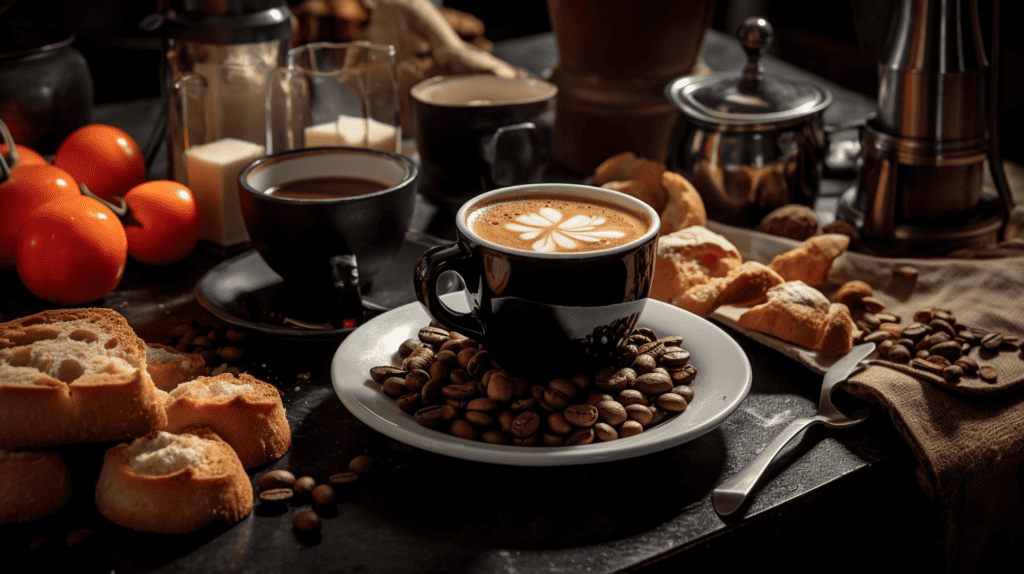
Tamper
As a barista, a tamper is one of the most crucial tools you’ll need for coffee preparation. A tamper compresses ground coffee into a compact puck before brewing.
After grinding your beans, place the grounds into your portafilter and use your tamper to apply firm pressure. It’s essential to distribute the grounds evenly throughout the basket to prevent channeling or uneven extraction.
Experiment with different tamping techniques and pressures until you find what works best. Investing in a high-quality tamper will make all the difference in delivering consistent shots every time.
Techniques For Coffee Extraction And Brewing
Mastering the art of coffee brewing starts with understanding its science, from choosing the right brewing method to water temperature and quality.
Understanding Coffee Beans
Understanding the different types of coffee beans is crucial in mastering the art of coffee preparation. There are two main varieties: Arabica and Robusta. Arabica beans have a more nuanced flavor profile with hints of fruitiness and acidity.
They generally require more attention to detail during roasting to bring out their delicate flavors, making them popular among specialty coffee shops.
Knowing where your coffee comes from can also enhance your understanding of its unique characteristics and flavor notes. Beans grown at high altitudes tend to be denser and packed with richer flavors while those grown in lower elevations showcase lighter bodies with milder notes.
Additionally, processing techniques play an important role in determining the final product’s taste as different methods such as wet processing or natural processing produce distinct results that influence everything from aroma to texture.
Choosing The Right Brewing Method
As a barista, selecting the right brewing method for the coffee you are working with is essential. Below are some tips to help you make the best selection:
- Consider the origin and roast of the bean: Different brewing methods can bring out different flavors and characteristics of coffee beans. A light roast may be better suited for pour-over or drip methods, while a darker roast may work better with an espresso machine.
- Evaluate the customer’s preferences: Some customers prefer a strong, bold flavor while others like a lighter, more delicate taste. Knowing your customer’s preferences will help you select the best brewing method.
- Assess the quantity needed: If you’re making coffee for a large group of people, a French press or drip method might be more efficient than individually preparing each cup with an AeroPress.
- Determine available equipment: Not all brewing methods require specialized equipment, but if you have access to an espresso machine or Chemex brewer, it might be worth exploring those options to create unique drinks that stand out from competitors.
- Experiment and adjust accordingly: Don’t be afraid to try different brewing methods and adjust based on customer feedback. This willingness to experiment can lead to new creations and loyal followers.
Keep in mind that mastering different brewing techniques takes time and practice. With experience comes understanding how each method affects the final product and how to achieve optimal taste profiles.
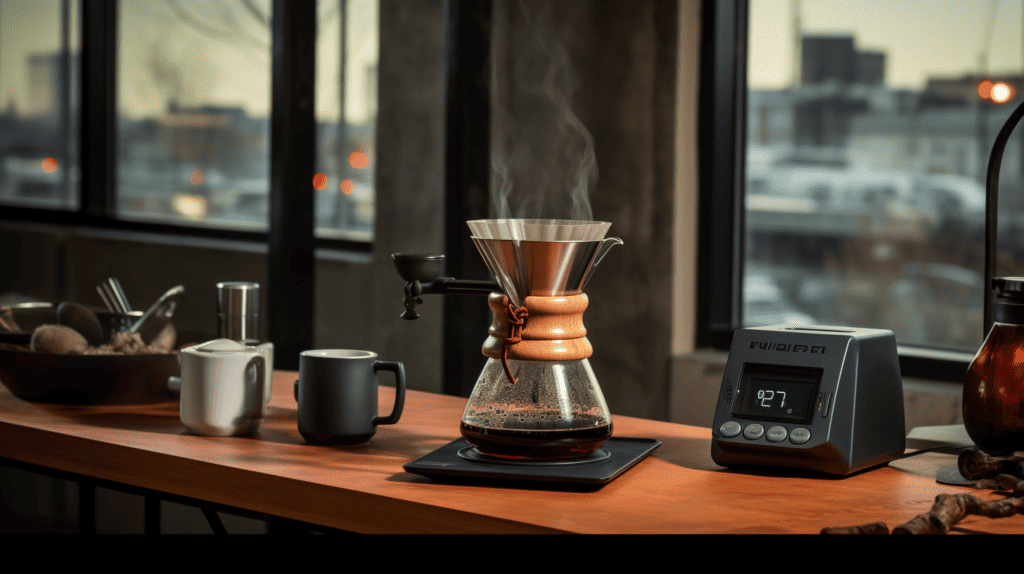
Water Temperature And Quality
Water temperature and quality play a crucial role in the taste of the final coffee product. The ideal water temperature for brewing coffee is 195 to 205 degrees Fahrenheit.
This specific range is necessary because it allows for properly extracting flavor compounds from the ground coffee without over-extracting or burning them.
Water quality can also significantly impact coffee taste, as minerals and impurities in water can affect the flavor profile.
As a barista, it’s important to be aware of these factors when preparing your customer’s favorite brews. By monitoring both the temperature and quality of your water source, you can ensure that each cup of coffee you serve meets your standards for optimal taste and consistency.
Dosage And Distribution Of Coffee Grounds
The dosage and distribution of coffee grounds play a crucial role in the taste and quality of your coffee. Getting this right can be challenging, but with practice, you’ll soon master it.
The amount of coffee used per cup will vary depending on several factors, such as brewing method, bean type, and personal preference. For example, use about 1 to 2 tablespoons of ground coffee for pour-over coffee per 6 ounces of water.
It’s crucial not to tamp too hard or unevenly as this can cause under-extraction or over-extraction resulting in a bitter or sour-tasting brew. A good rule is to fill your portafilter basket level with grounds and apply an even pressure while tamping using a tamper that is the correct size for your machine’s portafilter basket.
Tamping Pressure And Technique
Tamping is a crucial step in coffee preparation that involves compressing the ground coffee beans into a puck before brewing. The pressure and technique used when tamping can greatly affect the extraction and flavor of the espresso shot.
To achieve optimal results, baristas should apply consistent pressure when tamping, using their arm to create leverage rather than relying on their body weight.
A good rule of thumb is to use 30 pounds (or around 14 kilograms) of force when tamping. Additionally, evenly distributing the coffee grounds within the portafilter before tamping can help ensure an even extraction and prevent channeling.
According to “The Professional Barista’s Handbook,” tamping pressure should be equivalent to firmly squeezing someone’s hand for at least three seconds without causing pain or discomfort.
Brewing Time And Temperature
As a barista, one of the essential skills to master is knowing the correct brewing time and temperature. Brewing time and temperature affect the taste and quality of coffee.
A longer brewing time can result in an over-extracted, bitter taste while short brewing times may lead to weak flavors.
For example, a recommended brew time for drip coffee is around 4-5 minutes at about 200°F (93°C). Espresso shots should be extracted for around 25-30 seconds with water heated between 195-205°F (90-96°C).
Remember that different types of beans require different times and temperatures for their optimal extraction based on roast level and origin (altitude).
Water Quality And Filtration
Water quality is an essential component of coffee preparation. The taste and aroma of coffee can be heavily influenced by the water used in brewing. Poor quality water may contain impurities, such as chlorine or excess minerals, that can alter the flavor profile of the beans.
There are several ways to ensure high-quality water: one way is through reverse osmosis (RO) filtration systems that remove dissolved solids from tap water and enhance its purity.
Additionally, many coffee shops use coconut charcoal filters like those found in Third Wave Water packets, which add minerals back into RO-filtered water for a better-tasting cup of coffee.
As a barista focuses on perfecting their craft, should understand how to test their local water source and create recipes that accommodate any issues they find with the H20 they’re working with.
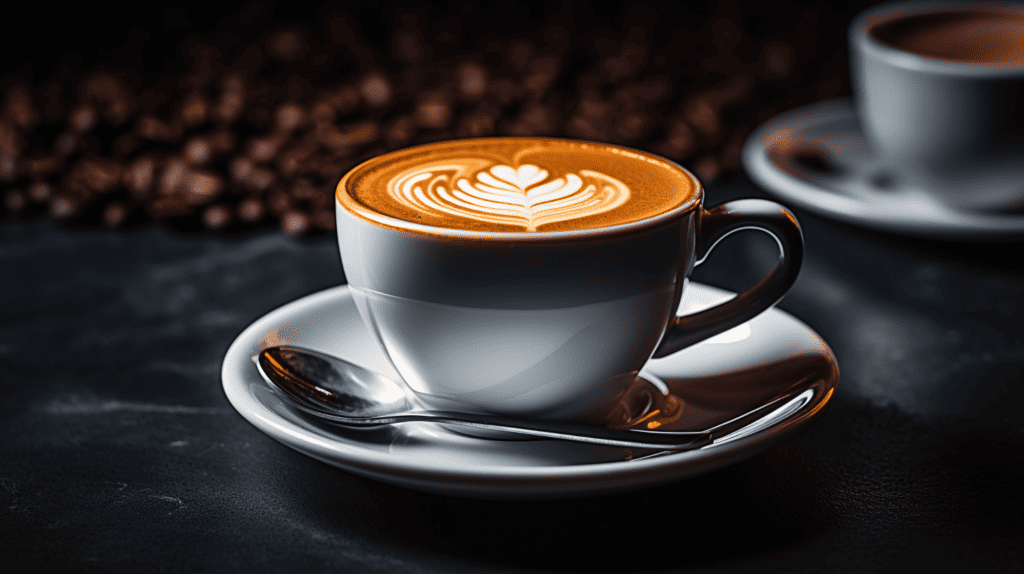
Milk Steaming And Latte Art Techniques
Learn the secrets to perfectly steamed milk and impressive latte art designs with our step-by-step guide, including alternative milk options and advanced techniques.
Choosing The Right Milk
As a barista, choosing suitable milk can make all the difference in preparing a delicious and satisfying cup of coffee. Whole milk is typically used for traditional espresso drinks like lattes or cappuccinos because it has a higher fat content, creating a creamier texture when steamed.
However, customers with dietary restrictions may prefer non-dairy alternatives such as almond milk, soy milk, or oat milk. It’s important to remember that each type of alternative milk reacts differently when steamed and may require specific techniques to achieve the desired frothiness and texture.
Temperature And Texture Of Steamed Milk
As a barista, mastering the art of steaming milk is essential for creating beautiful latte art. The temperature and texture of steamed milk can make or break a perfectly crafted latte.
Most commonly, baristas steam milk to achieve that velvety microfoam texture that creates the perfect base for latte art. To achieve this texture, baristas need to heat the milk between 140-150°F and carefully aerate it with a steam wand to create tiny air bubbles.
According to The Professional Baristas Handbook, choosing the right type of milk is crucial for achieving desirable results when steaming your milk. Whole cow’s milk is widely used in most specialty coffee shops due to its taste and fat content.
However, alternative plant-based options like soy or almond Milk may affect or change both flavor profiles and texture during preparation.
Basic And Advanced Latte Art Designs And Techniques
As a barista, creating latte art is an essential skill that enhances the visual appeal of your drinks and adds to the overall customer experience. Below are some basic and advanced latte art designs and techniques you can master:
- Heart: The heart is a classic latte art design. Start by pouring steamed milk into the center of your espresso shot. As the cup fills up, slowly move the pitcher back-and-forth to create a white dot in the center. Then, pour a thin line through the middle of the dot to create two half-circles on either side.
- Rosetta: To create this fern-like design, start with a base of steamed milk in your cup. Then, pour a thin stream of milk from your pitcher directly into the center of the cup until you see it rise to just below the rim. Tilt your wrist forward and backward as you pour to create alternating lines through the cup.
- Tulip: The tulip design starts with a similar technique as rosetta, but instead of alternating lines through the cup, use swift movements to create three droplets in different positions around each other.
- Swan: The swan design takes more practice but can be stunning when mastered. Start by pouring milk into your espresso shot until it’s about two-thirds full. Use swift wrist movements to pour steamed milk directly into one spot and then pull back to create another stream that crosses over it.
Remember, mastering latte art takes time and practice. Start with basic designs before moving on to more advanced ones and don’t be afraid to experiment with different pouring techniques or tools like toothpicks or etching tools for more intricate designs.
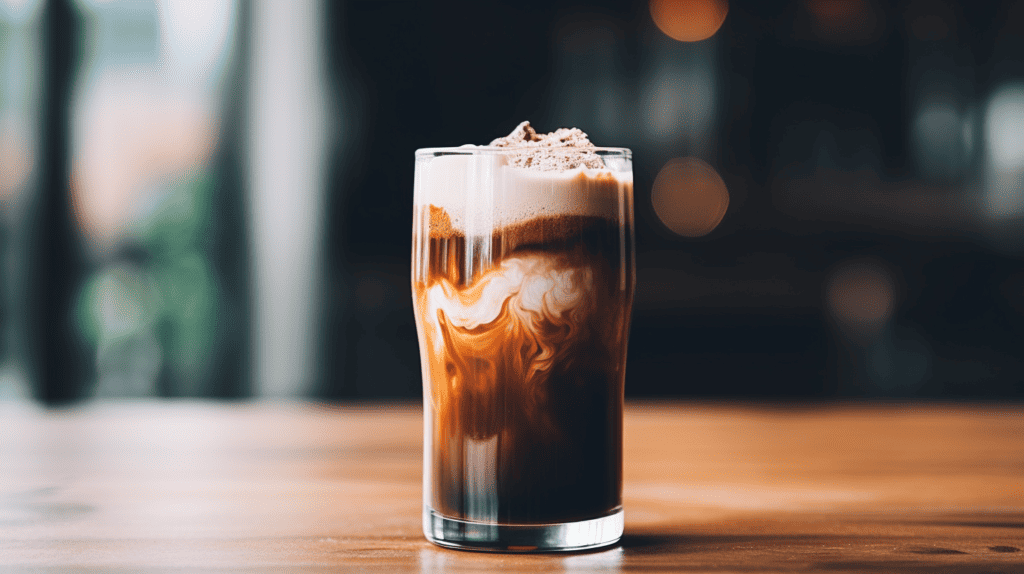
Alternative Milk Options And Considerations
As a barista, catering to customers with dietary restrictions or preferences is essential. Alternative options like almond milk, soy milk, oat milk, and coconut milk have become increasingly popular.
For example, almond milk has a nutty flavor that pairs well with espresso’s natural sweetness, while soy milk tends to be creamier and sweeter than dairy. Oat milk is becoming more popular due to its creamy texture and ability to froth well for latte art designs.
When choosing which alternative milks to offer at your coffee shop, consider factors such as taste profile, availability in your area, price point (as some options may be more expensive), and shelf life.
The Art Of Serving Coffee And Creating A Customer Experience
Choose the perfect cup and saucer to showcase drinks with style, present them to customers professionally, engage with your patrons to create a loyal following and boost sales by pairing coffee with desserts.
Choosing The Right Cup And Saucer
As a barista, choosing the right cup and saucer can make all the difference in creating a memorable coffee experience for your customers. The size and shape of the cup can affect how long the drink stays hot, as well as the aroma and taste.
The design of the cup and saucer can also greatly enhance the presentation and leave a lasting impression on customers. Some cafes choose unique or colorful designs to match their brand or create an eye-catching display.
It’s also important to consider functionality – handles should be large enough for easy gripping without being too heavy, while saucers should have enough space to catch any spills or drips.
Properly Presenting And Serving Drinks
As a barista, it’s not just about making a great cup of coffee – it’s also about creating an experience for your customers. Presentation is key when it comes to serving drinks, and the right cup and saucer can make all the difference.
In my experience, I’ve found that offering a variety of cups and mugs in different sizes is important as it gives customers options depending on their preference or mood.
When serving drinks, attention to detail is crucial. I always ensure that the cup is clean and free from any smudges or residue before pouring the drink into it.
In addition, engaging with customers during service by asking how they’d like their drink prepared goes a long way in creating customer satisfaction and loyalty.
It shows that you care about their preferences and are willing to tailor each drink to their liking.
Engaging With Customers And Creating A Loyal Following
As a barista, it’s not just about making great coffee. Engaging with customers and creating a loyal following is essential to the job.
You are responsible for creating a warm and welcoming atmosphere for your customers to relax and enjoy their coffee.
One way to engage with customers is by offering personalized recommendations based on their tastes. Talk to them about what flavors they like and recommend something that suits their preferences.
Remembering regulars’ names, orders, or even small details like how they take their coffee can go a long way in building customer loyalty. Hosting events such as cuppings or latte art competitions can also bring people together over a shared love of coffee.
Pairing Coffee With Desserts
Pairing coffee with desserts is an essential part of the coffee-serving experience. At our coffee shop, we offer a variety of complementary desserts that pair perfectly with our coffee selections. Here are some tips for pairing coffee with desserts:
- Consider the flavor profiles of both the dessert and the coffee. For example, dark chocolate pairs well with espresso as the bitterness complements each other, while a sweeter dessert like a fruit tart pairs better with a light roast coffee.
- Pair textures – Pairing smooth textures like custards or mousses with bold coffees can create an interesting contrast.
- Consider temperature – Warm desserts like brownies or apple pie pair well with hot brewed coffees, while cold desserts like ice cream or sorbets match well with iced or cold brewed coffees.
- Match intensity – When pairing dessert and coffee, ensure both have similar intensities in terms of flavor strength and sweetness to create balance.
- Experiment – Don’t be afraid to experiment by adding alternative milk options or flavored syrups to your specialty drinks to create unique flavor combinations that will impress your customers.
By following these tips and experimenting with different pairings, you can create a memorable experience for your customers that will keep them coming back for more!
Boosting Sales And Profits For Coffee Shops
As a barista, it’s important to not only master the art of coffee preparation but also understand how to boost sales and profits for your coffee shop. One way to increase sales is by offering seasonal drinks and specials that cater to holidays or local events.
Another effective strategy is to offer loyalty programs and discounts for repeat customers. This can encourage regular visits and help build a loyal customer base.
Additionally, pairing your coffees with desserts or snacks can entice customers to make additional purchases.
Becoming A Master Barista
Participating in barista training programs and coffee competitions, staying up-to-date with the latest trends and techniques, building a loyal customer base, and creating your own signature drinks are essential steps to becoming a master barista.
Barista Training Programs
Attending a barista training program can be incredibly beneficial for those looking to become a professional barista. Here are some popular options for those interested in honing their coffee skills:
- Specialty Coffee Association (SCA) Education: The SCA offers a comprehensive educational program for coffee professionals, including the Barista Pathway. This program covers everything from espresso extraction to customer service.
- Local Coffee Shops: Many local coffee shops offer barista training programs for their employees or aspiring baristas in their community. These programs may focus on specific brewing methods or latte art techniques.
- Espresso Machine Manufacturers: Espresso machine manufacturers like La Marzocco and Nuova Simonelli offer training programs for their equipment, which can benefit both professional and home baristas.
- Online Courses: There are numerous online courses available for those unable to attend in-person training programs. These courses cover a range of topics, from coffee basics to latte art.
- Hands-on Experience: One of the best ways to learn how to be a great barista is through hands-on experience working in a coffee shop. Many shops offer on-the-job training, allowing aspiring baristas to hone their skills while serving customers.
Whether you choose, investing time and effort into barista training can help you become a better coffee professional and set you apart in the industry.
Participating In Coffee Competitions
I have found that participating in coffee competitions is an excellent way to challenge and improve my barista skills. These events showcase some of the best baristas worldwide, competing on different aspects of their craft such as latte art, espresso extraction and brewing techniques.
Networking with other industry professionals is a significant benefit of participating in coffee competitions. Establishing relationships with other experienced baristas can provide you with invaluable insights into new techniques, equipment or trends in the industry.
Additionally, it’s a fantastic way to test your abilities against some of the top performers worldwide and gain exposure for your café or brand.
Staying Up-to-date With The Latest Trends And Techniques
As a barista, one must constantly learn and adapt to the changing coffee landscape. It is important to stay up-to-date with the latest trends and techniques in the industry to remain relevant and competitive.
Attending workshops, seminars, and classes can provide valuable insights into new brewing methods or flavor profiles that customers may be searching for.
In addition, staying connected with other industry professionals can offer growth and collaboration opportunities. Networking through social media platforms or attending local coffee events allows for the exchange of ideas and knowledge sharing among fellow baristas.
Building A Loyal Customer Base
Building a loyal customer base is one of the keys to success as a barista. This involves more than just making great coffee – it’s about creating an experience that customers can’t find anywhere else.
In addition to personal interactions, pairing coffee with desserts or offering unique concoctions that reflect your personality as a barista are also ways to stand out from the competition.
Another important aspect is staying up-to-date with trends and techniques in the industry, as well as continuing education through barista training programs or participating in coffee competitions.
Creating Your Own Signature Drinks
One of the most exciting aspects of being a barista is creating your own signature drinks. This allows you to showcase your creativity and skill, while also offering unique flavors for customers to try.
To create a successful signature drink, it’s important to start with a solid understanding of coffee flavor profiles and how different ingredients will interact with them.
Some great examples of signature drinks include the Dirty Chai Latte, made by adding a shot of espresso to traditional chai tea latte; or the Nutella Mocha, which combines rich chocolate syrup with hazelnut-flavored espresso shots.
Conclusion: Enjoying The Perfect Cup Of Coffee
Congratulations! You are now armed with the knowledge and skills necessary to become a true master barista. From choosing the right coffee beans to understanding the science of brewing, you have covered every aspect of coffee preparation in this guide.
With your newly acquired expertise, you can impress customers with latte art designs and create unique concoctions that reflect your style.
Remember, mastering the art of coffee takes time and practice, so keep experimenting until you find your perfect cup of java.
FAQs on Coffee Preparation & Serving:
1. What are some essential coffee preparation techniques for beginners?
Beginners should prioritize mastering key skills such as properly grinding beans, measuring out correct ratios of water and coffee, using optimal brewing temperatures and times, and understanding the differences between various brewing methods.
2. How can I improve my latte art skills?
Becoming proficient at latte art requires practice and patience, but there are several steps you can take to improve your technique. Some tips include using quality milk with high-fat content, steaming milk to the right temperature and texture for different designs, and pouring deliberately in a steady stream from higher up above the cup.
3. Are there any special considerations for serving coffee to customers with specific allergies or dietary restrictions?
Baristas should be aware of common allergens such as nuts or soy that may be present in certain beverage additives or flavorings. Additionally, they can offer alternative milk options besides dairy (such as oat or almond), sugar-free syrups & ensure proper cleaning procedures are undertaken to maintain overall hygiene while preventing cross-contamination.
4. Why is sourcing high-quality coffee ingredients necessary?
Sourcing high-quality ingredients ensures the best possible taste profile for your dishes whilst showing empathy towards suppliers who work hard cultivating beans under environmentally sustainable conditions – creating mutual benefits at both ends! Top-tier varieties typically undergo rigorous testing before being distributed, so only really good products make it through – guaranteeing consistency no matter which region one is buying from, ensuring freshness each time cup is brewed/you serve guests their favorite drinks!

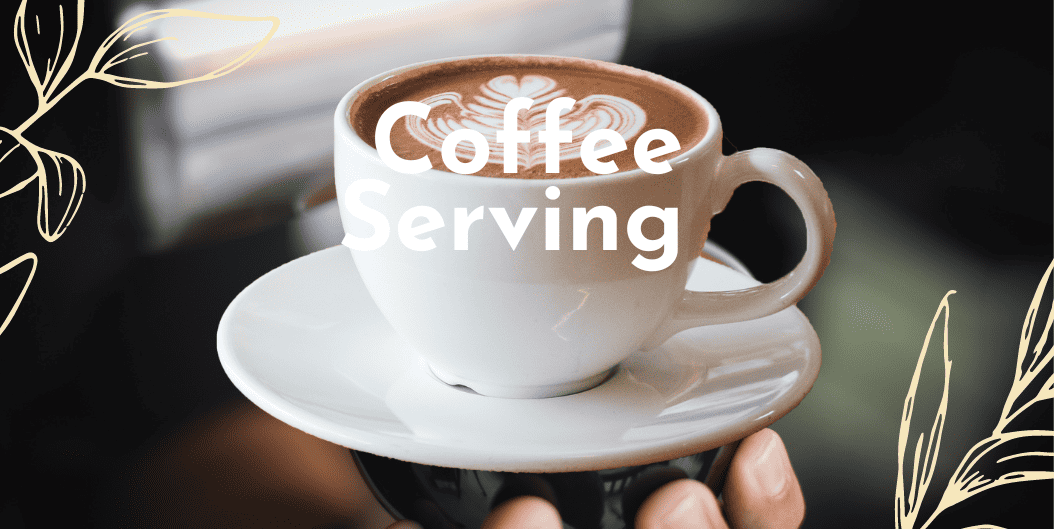
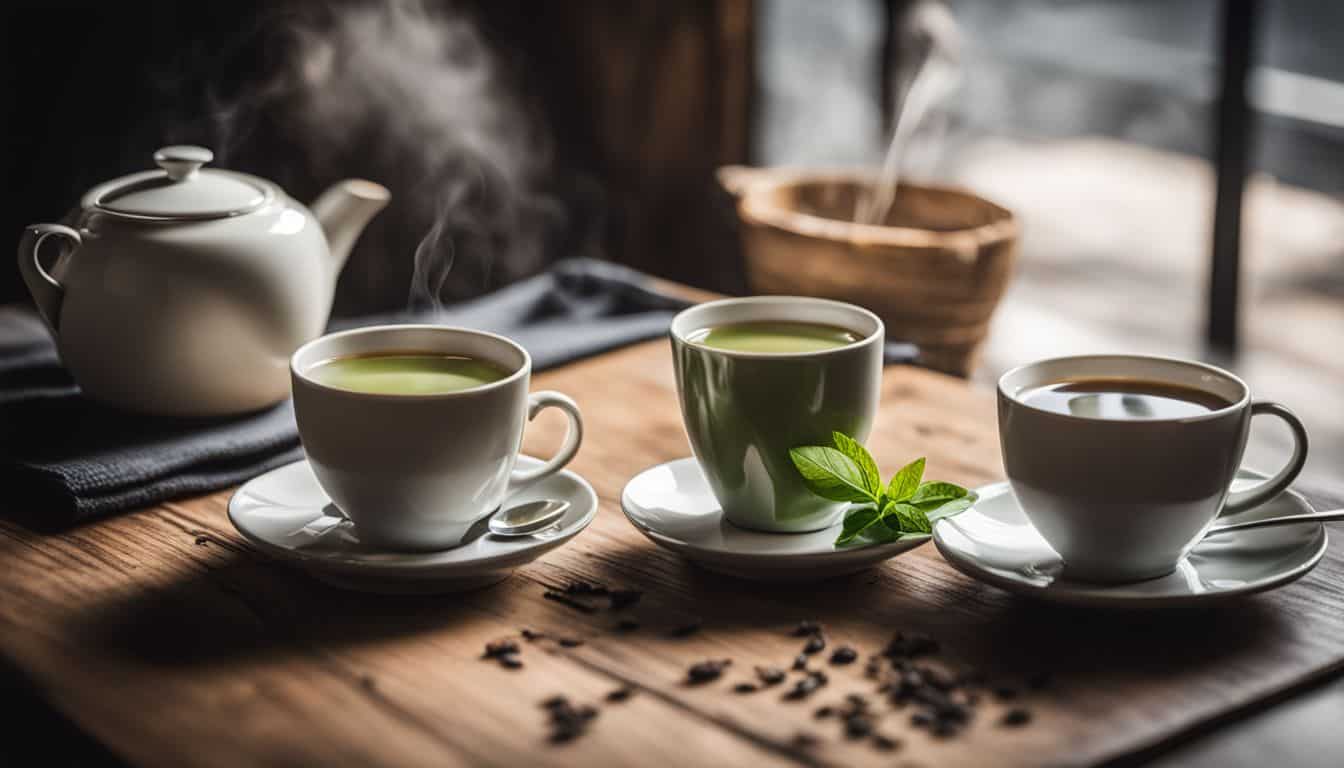

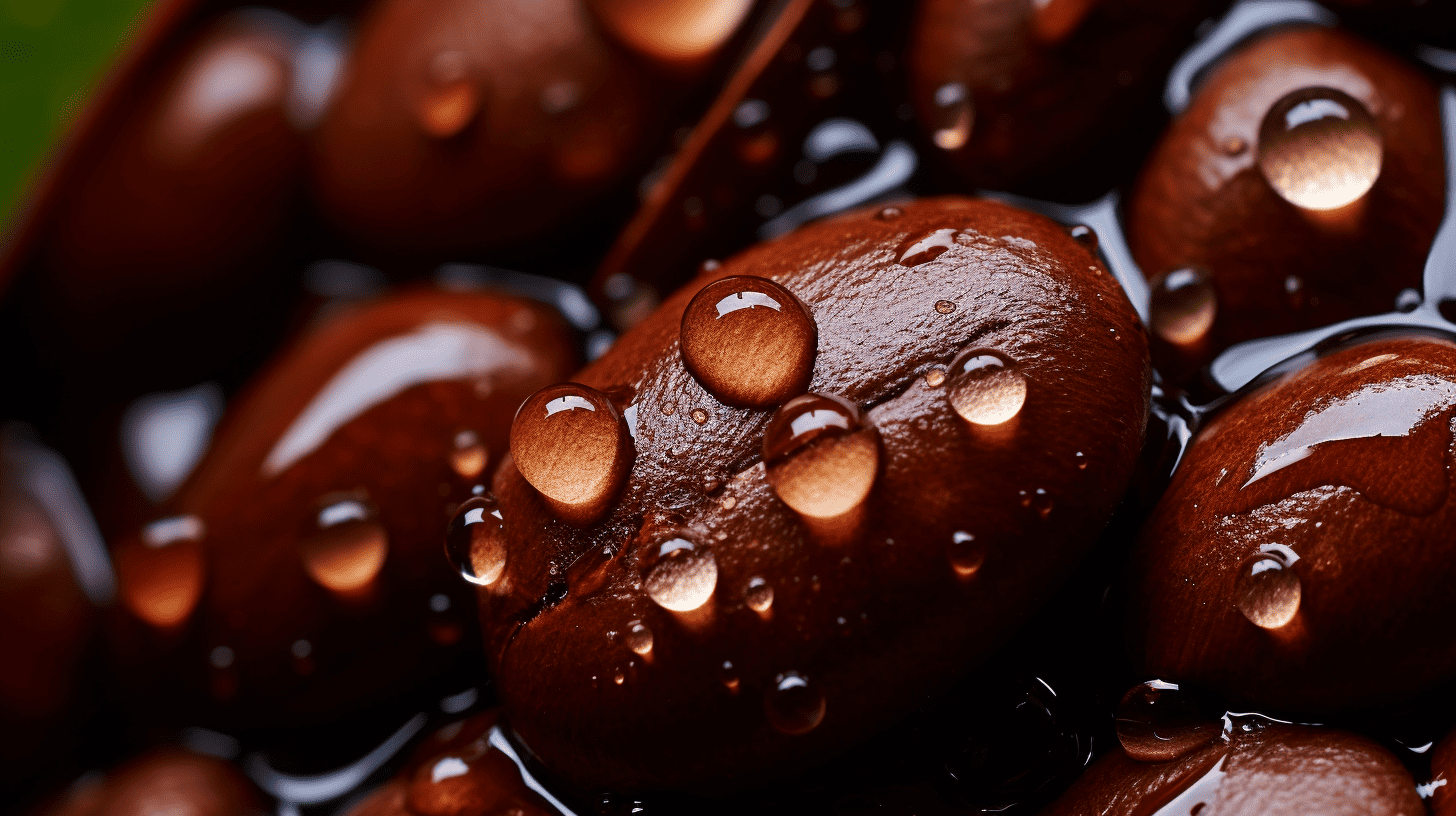
Leave a Reply